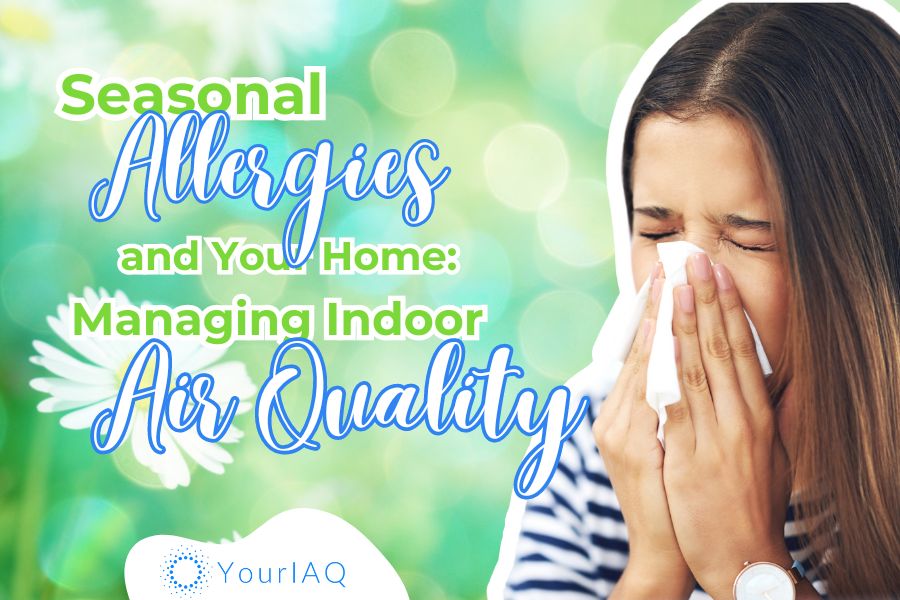
If you’ve ever woken up with eyes so itchy you could scratch them out, a nose that won’t stop running, and a brain so foggy you can barely think, you’re not alone. That feeling makes you miserable at home, tanks your productivity at work, and disrupts your sleep. In fact, studies show that allergies cost the US billions of dollars in lost productivity every year. It can be a nightmare, but there are seasonal allergies home solutions to help you find relief.
If you’re ready to take control of your seasonal allergies and reclaim your home, you’re in the right place. My struggles with allergies inspired me to find solutions, and I discovered simple yet incredibly effective ways to make my home a low-allergen zone. After some trial and error, I found that simple changes to my cleaning routines, air quality, and personal care made a massive difference.
We’ll cover everything from deep cleaning and decluttering to utilizing air purifiers and managing your routines – a complete toolkit for allergy-proofing your home.
Let’s start!
Symptoms of Seasonal Allergies & Common Allergens Found Indoors
Seasonal allergies manifest differently in everyone. Here’s a comprehensive list of seasonal allergy symptoms, divided into common, less common, and those that might indicate a more serious issue:
Common Seasonal Allergy Symptoms
- Respiratory: Sneezing, coughing, runny nose, itchy nose/throat, post-nasal drip, congestion, difficulty breathing through the nose, sinus pressure/pain
- Eyes: Itchy, watery, red, swollen eyes or eyelids
- Ears: Itchy ears, feeling of fullness in the ears
- General: Fatigue, headache, irritability
Less Common, But Still Possible
- Skin: Hives, rashes, eczema flare-ups (especially in those with existing eczema)
- Digestive: Stomach upset, nausea, diarrhea (less frequent than respiratory symptoms)
- Asthma-Related: Wheezing, chest tightness, shortness of breath (especially in those with pre-existing asthma)
Signs It Might Be More Than Allergies
- Fever: Allergies do NOT directly cause fever. If you have a fever, it indicates an infection.
- Colored Mucus: Thick, yellow, or green mucus usually means a bacterial infection is present.
- Symptoms Last Over 10 Days: Allergies can be persistent, but it’s worth seeing a doctor if they last this long without easing.
- Severe Symptoms: If symptoms significantly impact your daily life even with home remedies and over-the-counter (OTC) meds, it warrants further evaluation.
Depending on the individual and the specific allergen causing the reaction, these symptoms may vary in intensity and duration. Identifying these symptoms will help you determine whether you’re dealing with seasonal allergies and take appropriate action.
Spring: Battling the Tree Pollen Onslaught
As temperatures rise, trees burst into bloom – a beautiful sign of spring, but for many allergy sufferers, the start of a miserable allergy season.
Tree pollen spreads far and wide on the wind, causing spring allergies.
Trees release tiny pollen grains into the air as part of their reproductive cycle. These microscopic grains are designed for travel, relying on the wind to carry them and reach other trees of the same species.
A tree can release millions of pollen grains and travel miles on windy days. This explains why tree pollen can be a major allergy trigger, even if you don’t have many trees near your home.
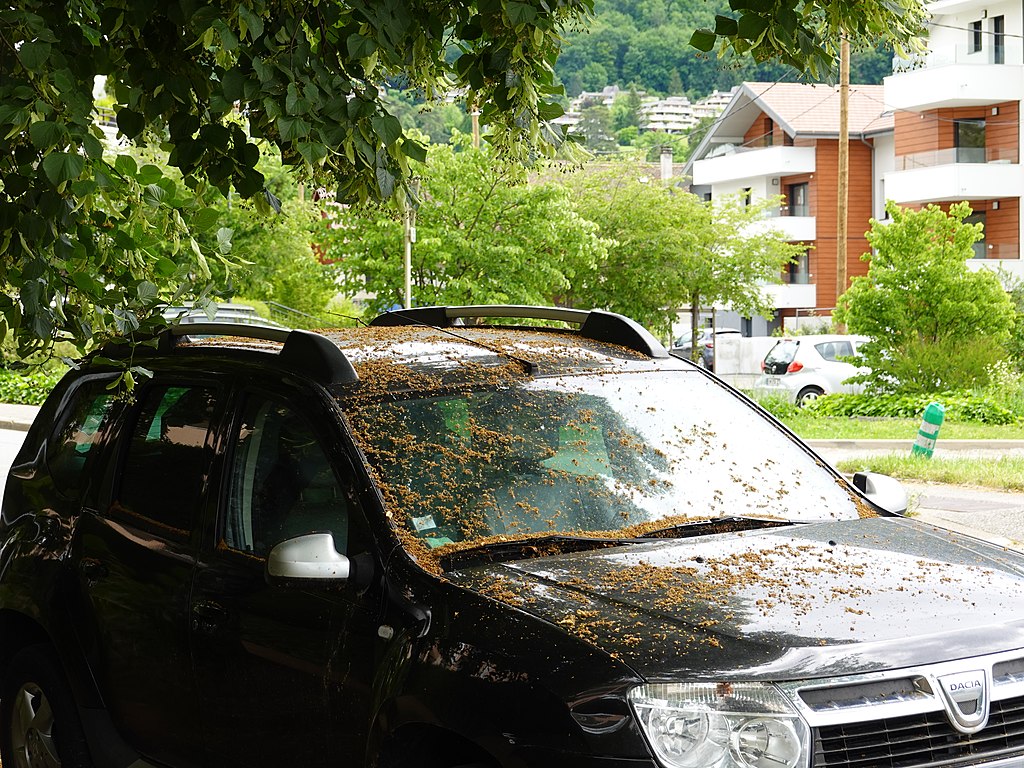
Worst allergy-causing trees in the United States
To combat spring allergies, it’s essential to identify the worst tree pollen offenders in your area. While many trees release allergenic pollen, some species are far more troublesome than others.
Oak trees are a major culprit across the US, causing classic allergy symptoms like sinus congestion, intense sneezing, and itchy, watery eyes. Cedar (Juniper) is notorious for its intense effects (Cedar fever), particularly Mountain Cedar in the Southwest and surrounding areas.
Birch, while most problematic in the northern states, is known for causing severe watery eyes and sinus problems. The Midwest also sees significant issues with Cottonwood, whose pollen can be a major irritant. Alder is a primary concern on the West Coast, especially in coastal areas.
| Cottonwood Allergies Fun Fact
Cottonwood trees, known for their fluffy seed dispersal in late spring, are often blamed for allergies. Surprise! It’s not the fluffy stuff causing your misery. Cottonwoods release pollen earlier in the season, and this less visible pollen triggers reactions in sensitive individuals.
|
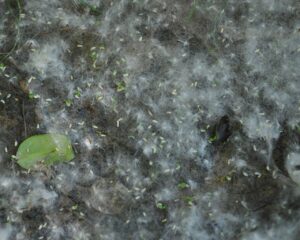 Fluffy “cotton” and seeds from an eastern cottonwood tree (P. deltoides subsp. deltoides) [EnLorax G. Edward Johnson, CC BY 3.0, via Wikimedia Commons] Fluffy “cotton” and seeds from an eastern cottonwood tree (P. deltoides subsp. deltoides) [EnLorax G. Edward Johnson, CC BY 3.0, via Wikimedia Commons] |
And as if tree pollen wasn’t enough, the warming weather in spring also brings other allergy challenges like early grasses and increasing mold, further compounding the misery for many sufferers.
See the spread of tree pollen in your area with this live pollen map: https://www.pollen.com/map
What to do during Spring allergy season?
Winter isn’t just about cozy nights indoors – it also means months of dust, pet dander, and other allergens accumulating around your home. As spring arrives, this buildup becomes a hidden source of misery for allergy sufferers.
A standard cleaning routine isn’t enough – it’s time for a targeted allergy-busting deep clean!
Spring Cleaning: Eliminate Pollen from Your Home
Entryways & Windowsills
Pollen clings to shoes, floors, and surfaces near open windows or doors. Thoroughly vacuum and mop entryways. Wipe down windowsills, frames, and screens. (Pollen can collect here even with windows closed).
High Surfaces, Curtains, & Blinds
These often-overlooked areas trap dust and pollen.
- Dust ceiling fans, tops of shelves, and light fixtures.
- Wash or vacuum curtains and blinds (check care instructions first).
Bedding
Your bed linens are a prime spot for allergens to collect. Wash ALL bedding in HOT water – sheets, pillowcases, duvet covers, and blankets/comforters if possible.
Vacuuming: Carpets & Upholstery
A regular vacuum isn’t enough during allergy season. Use a vacuum with a HEPA filter designed for allergens. Slowly and repeatedly go over carpets, rugs, and upholstered furniture.
Pro tips:
- Declutter: Fewer surfaces mean fewer places for allergens to hide.
- Washing: Consider washing soft toys and other fabric items that collect dust.
HEPA Air Purifiers: Start Early for Maximum Benefit
Pollen doesn’t appear overnight – it gradually builds up indoors, even before you start sneezing. That’s why getting ahead of the problem with a HEPA air purifier can make a significant difference in managing your spring allergies.
How HEPA Air Purifiers Work
HEPA stands for High-Efficiency Particulate Air. These filters trap tiny particles like pollen, dust mites, and pet dander from the air passing through them. Look for purifiers certified “True HEPA,” which guarantees a high level of filtration.
Why Starting Early Matters
- Reduces Overall Burden: Even low levels of pollen irritate sensitive airways. Starting your purifier early reduces the overall amount of allergens you’re exposed to throughout the season.
- Prevents Overload: Waiting until your symptoms are severe means the purifier has to work harder to catch up.
- Creates Cleaner Baseline: Starting early means you begin the worst of the pollen season with cleaner indoor air.
If Budget is a Concern
Focus on purifying the air where you spend the most time. A single purifier in your bedroom can greatly affect nighttime allergy symptoms. If possible, move a purifier between high-use rooms during the day.
Recommended HEPA Air Purifier for Specific Room Size
As a lifelong allergy sufferer, I know the struggle of finding the right tools for relief. I’ve learned a few key things about HEPA air purifiers through trial and error.
Firstly, don’t just focus on price. The most important factor is the CADR rating, which tells you how much air the purifier can clean. I tried purifiers that were too small for my room and realized the importance of CADR.
Choose a CADR that exceeds your bedroom’s square footage or the room you want to prioritize. Other features like noise level, smart controls, and additional filter types (e.g., activated carbon for odor control) can be important too, but these may impact the cost.
Opting for trusted brands like Levoit, Blueair, or Coway often means better quality and customer support. Remember that HEPA filters need regular replacement, so factor in this ongoing cost before you buy.
| Model Name | Approx. Room Size | Notable Features |
| Levoit Core 300S | Small bedrooms | Budget-friendly, quiet |
| Blueair Blue Pure 411 | Medium bedrooms | Smart controls, sleek design |
| Coway Airmega 250 | Larger rooms | Excellent filtration, long filter life |
While I’ll recommend some specific models, always research to find the purifier that’s the perfect fit for your needs and budget.
Controlling Humidity for Allergy Relief
As temperatures warm in spring, it’s not just pollen increasing—humidity starts to rise too. While we might welcome the change after a dry winter, high humidity creates the perfect breeding ground for another allergy trigger: mold.
How Humidity Fuels Mold Growth
Mold spores are always present in the air but need moisture to thrive. When indoor humidity levels rise above 50%, mold growth accelerates. Damp areas like basements, bathrooms, and even under sinks are especially vulnerable.
Why Mold Worsens Allergies
Mold releases its spores, which act as airborne allergens. For those sensitive to mold, these spores can trigger allergy symptoms similar to pollen (congestion, itchy eyes, wheezing, etc.). Even if you’re not directly allergic to mold, it can irritate your airways, making you more reactive to other allergens like pollen.
- Managing Humidity for Allergy Relief
- Target Range: Aim to keep indoor humidity below 50% using a hygrometer (humidity monitor).
- Dehumidifier: A dehumidifier prevents mold growth in humid climates or basements.
- Ventilation: Improve airflow in bathrooms (exhaust fans) and kitchens (range hood) to reduce lingering moisture.
- Leaks: Fix any leaky pipes or water damage immediately.
- Drying: Promptly dry wet towels, sports gear, etc., to prevent dampness.
If you suspect significant mold growth in your home, consult a professional for assessment and remediation.
Smart Habits for Tree Pollen Season
Battling pollen allergies isn’t just about what you do indoors. Small changes in your daily routine, like those I’ve learned through my allergy struggles, can make a big difference in how much pollen you’re exposed to and how your body reacts.
- On high pollen days, keep windows closed during peak times (often mornings).
- If you need ventilation, open windows late afternoon or evening when pollen levels tend to drop.
- Remove outer layers like jackets and sweaters when coming indoors to avoid bringing pollen further into your home. This simple habit has been an absolute game-changer for me!
- Shower and wash your hair before bed to remove pollen and prevent it from lingering on your pillow. It is a relaxing way to end the day with less risk of waking up stuffy.
- Another game-changer for me has been removing my shoes as soon as I get inside. This prevents tracking pollen further into the house and minimizes nighttime allergy misery.
- If possible, AC with a filter can be helpful on high pollen days.
- Use websites or apps to stay informed about daily pollen levels. This helps me know when to be extra prepared.
Related FAQ: Does rain help with pollen allergies?
The answer is a bit more nuanced than a simple yes or no. Rain does wash pollen out of the air, providing a short-term decrease in airborne allergens. This is why some people feel better right after a rain shower.
Unfortunately, once the rain dries, pollen deposited on the ground can be stirred back into the air by wind. For certain tree species, rain can even trigger the release of MORE pollen!
Pay attention to pollen counts in the days following rain. This is the best indicator of your actual allergen exposure. For easy tracking, try a pollen app like Pollen.com (available on Android and iPhone)
Summer Allergy Triggers: Grasses, Mold, and the Heat
As trees stop releasing pollen, a new allergy culprit takes center stage in summer: grasses.
Understanding Grass Pollen Season
Grass pollen release peaks in late spring/early summer, but can persist into fall in some areas. Cutting lawns stirs up massive amounts of pollen, leading to allergy spikes.
Many common lawn grasses produce highly allergenic pollen, causing frustrating symptoms even for those who sailed through the tree pollen season.
Types of allergy-causing grasses:
- Timothy, Kentucky Bluegrass, and Ryegrass are common triggers across much of the northern US.
- Bermuda grass is a major problem throughout the South, alongside Johnson grass.
- Other grasses can cause allergies depending on your specific location.
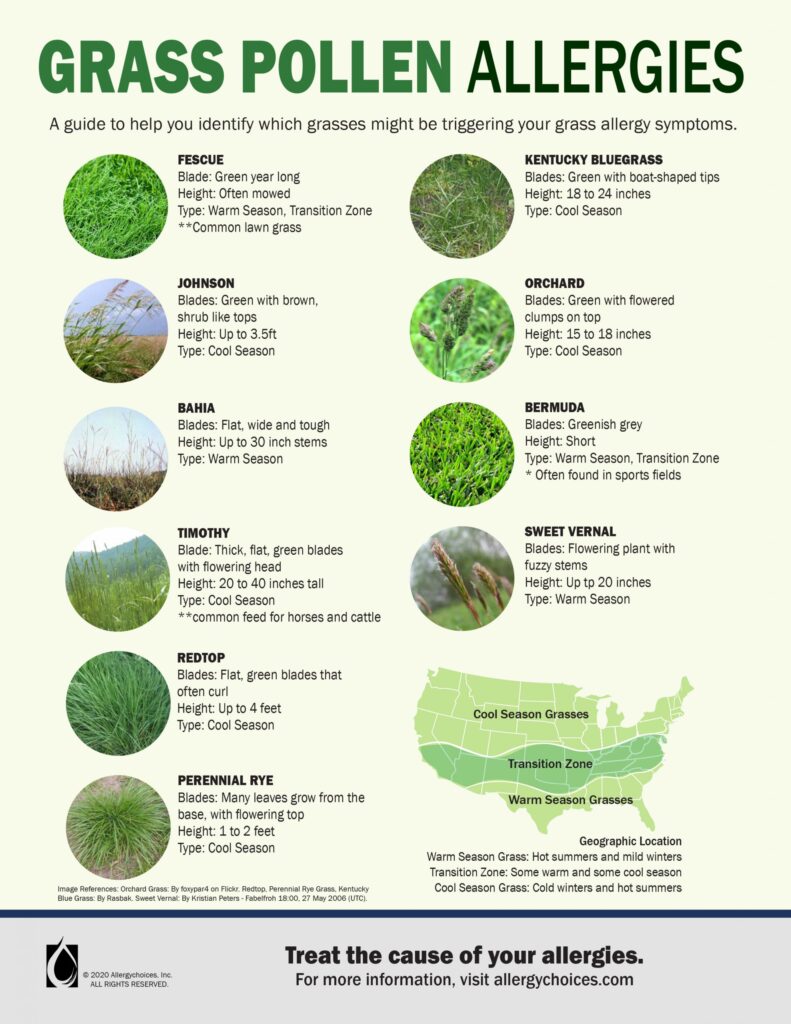
Mold’s Summer Surge
While grasses take the spotlight, summer’s humidity and heat are catalysts for another troublesome allergen: mold.
Warm, damp conditions are perfect for mold growth on decaying leaves, vegetation, and soil. Unresolved mold from spring (damp basements, leaks, etc.) continues to release spores all summer. Mold spores act as allergens, and a compromised respiratory system is more vulnerable to other irritants like grass pollen.
The Heat Factor
If you think summer allergies are just sneezes, think again! The heat brings challenges for allergy sufferers too:
- Airway Irritation: Heat can directly irritate the lining of your nose and airways, making you more reactive to allergens in general.
- Pollution Problems: Air pollution, like ground-level ozone, tends to worsen in hot weather, compounding breathing difficulties for those with allergies.
Beating Summer Allergies Indoors
When temperatures soar, keeping your home cool becomes a priority. However, the usual “open the windows” advice isn’t always available for allergy sufferers. Here’s how to strike a balance:
- Air conditioning filters some allergens, BUT can dry the air excessively, which might not be enough on the worst days. If possible, ventilate with fresh air in the early morning or late evening, when pollen counts are lower. Think of those cooler hours as your window of opportunity!
- Exhaust fans changed my life, especially in the bathroom where mold and steam made my allergies rage.
- Air quality monitors measuring pollutants and humidity can help you make informed choices about when to ventilate.
- These strategies are a great start, but for many allergy sufferers, a multi-pronged approach is key to getting through those worst summer days. Let’s dive into your complete summer allergy toolkit:
Your Summer Allergy Toolkit: Home Solutions
Here’s how to make your home a sanctuary when grass pollen and mold get overwhelming:
Know Your Enemy
Include grass pollen in your regular pollen count checks. Services like the National Allergy Bureau pollen count in your local area can help you stay informed.
Limit Outdoor Exposure
On high pollen days, keep windows closed, minimize lawn time, and change clothes when coming inside. Remember, even dried grass clippings release pollen.
Indoor Air Quality
Air conditioning filters some allergens, but it can also dry out the air and might not be enough on the worst days. For a cleaner indoor environment, consider a HEPA air purifier.
Look for models with additional mold-capturing capabilities or higher airflow rates for larger spaces. I’ve tried several purifiers, and while they help immensely, sometimes I still struggle on those high pollen or mold days.
Don’t underestimate the power of exhaust fans either, especially in bathrooms where high humidity can worsen allergies.
See more:
Reviewing the Best Indoor Air Quality Apps
Indoor Air Quality Monitoring: A Beginner’s Guide to Testing Your Home’s Air
Don’t Let Fabrics Make Allergies Worse
Dust mites thrive in summer humidity too. Use allergen-proof covers for bedding, and wash fabrics like throws and cushion covers more frequently.
| Summer Pet Woes?
Summer heat can mean more shedding and worse pet allergies. Allergens like dander cling to fur and circulate in your home’s air. Your furry friend can track pollen and other allergens in their fur, adding to your indoor allergy burden. Tips to tackle it:
|
Soothe Your Summer Allergies with Saline Rinse and Tea
- Saline Rinse: A gentle way to cleanse nasal passages of pollen and irritants.
- Soothing Teas: Chamomile or nettle tea might offer some relief, but remember, they aren’t a cure-all.
| Note: Always consult your doctor before using natural remedies, especially if you have severe allergies. |
Related FAQ: Can heat itself make my allergies worse?
Heat alone doesn’t directly cause allergies. However, it can significantly worsen existing sensitivities by:
Irritating the lining of your nose and throat makes you more reactive to any allergens you encounter.
If you get dehydrated in the heat, it can thicken mucus and worsen allergy symptoms.
Fall: The Ragweed Surge & Preparing for a Closed-Up Home
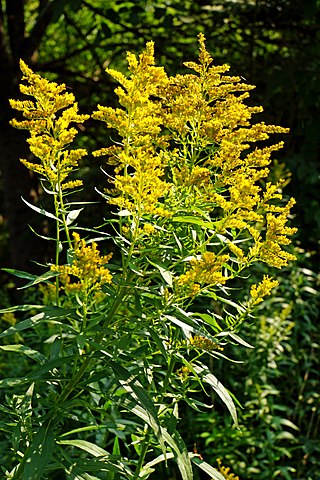
Why Ragweed is the Worst
Ragweed is the primary culprit behind fall allergies across much of the US. A single plant can release a million pollen grains per day! Unlike trees with a short pollen burst, ragweed can cause misery from August into October (or later with climate change).
Ragweed pollen is tiny and lightweight, carried for miles in the wind. You’re likely being exposed even if you don’t have it in your yard. The pollen is designed to cling, irritating your airways and making you more sensitive to everything else in the environment.
Beyond Ragweed: Other Major Fall Allergens
Certain weeds are late-season bloomers, keeping pollen counts up even as ragweed fades. Examples like Russian thistle and sagebrush are notorious culprits.
Alternaria mold is a major fall/winter problem due to the damp climate. This type of mold can cause severe reactions in sensitive individuals.
The Winter Connection: Why Fall Allergies Can Ruin Your Winter
Fall allergies don’t just mean sneezing and itchy eyes right now. They can have serious consequences that last long after the leaves fall. Here’s how:
- Weakened Defenses: Constant battling of allergens like ragweed and mold inflames your airways. This leaves your sinuses and respiratory system vulnerable to colds, flu, and other winter bugs.
- Sinus Trouble: Lingering inflammation from fall allergies makes it harder to clear your sinuses. This increases your risk of painful sinus infections lasting for weeks.
- Immune System Overload: Your body uses many resources to fight allergies. When winter hits, your immune system is already tired, making it harder to fight off viruses or recover quickly if you get sick.
- Asthma Attacks: Fall allergies are a major trigger for anyone with asthma. Flare-ups now can make it much more challenging to manage your asthma all winter long.
Fall Allergy Prep: Home Solutions for a Healthier Winter
Deep Cleaning: The Pre-Winter Edition
Before those first cold snaps force windows shut, do a final, allergen-targeted clean. Unlike spring, the goal isn’t just to dust – it’s about eliminating the pollen, mold spores, and other irritants that will be trapped inside with you.
- Target Hidden Allergy Spots: Prioritize the places allergens hide: under beds, ceiling fan blades, behind furniture, and rarely-cleaned corners.
- Choose Allergy-Friendly Cleaning Products: Choose fragrance-free options, as scents irritate sensitive airways. Look for products that trap allergens (some dusting cloths do this better than others). Here are a few trusted brands to consider:
- Seventh Generation: Offers a wide range of fragrance-free cleaning products, including disinfecting wipes, all-purpose cleaners, and laundry detergents.
- Ecover: Provides plant-based and hypoallergenic cleaning formulas that are gentle on sensitive skin and airways.
- Microfiber cloths: Opt for microfiber cloths due to their superior ability to trap dust and allergens. Look for brands like E-Cloth or Norwex, which often offer multi-purpose clothes for various surfaces.
- Fight Allergens Where They Hide: Wash curtains/drapes, throw rugs, and pet beds, where allergens cling. Clean out your dryer vent – trapped lint is a fire hazard and can harbor dust and mold.
HVAC Prep
Ensuring your furnace and AC are ready is crucial for fall allergy management.
- Filter Changes: Upgrade to a higher MERV-rated filter (MERV 11+) designed for allergens. A clean filter now prevents the spreading of built-up dust when you start heating.
- DIY vs. Pro: For most, a filter change is enough. If you have serious allergies, an older system, or notice performance issues, a professional checkup ensures optimal air quality this winter.
Managing Mold & Mildew
As you seal your home for winter, stay vigilant against mold:
- Target Areas: Inspect attics, basements, window seals, and bathrooms – anywhere moisture might linger.
- Prevention is Key: Fix leaks immediately, use exhaust fans, and keep humidity below 50%. These proactive steps make a massive difference.
- When to Call a Pro: Don’t attempt to DIY large mold areas or if you suspect certain dangerous types (like black mold). A professional assessment is safest if your allergies are severe or your health is compromised.
Related reading: How to Know If Mold and Mildew Cause Allergies
Other Allergy Relief Products and Solutions (and When to See a Doctor)
In addition to air purifiers, various other allergy relief products and solutions are available. Nasal saline rinses can help alleviate congestion and reduce nasal inflammation. Over-the-counter antihistamines and nasal sprays can provide temporary relief from symptoms.
Allergy shots, also known as immunotherapy, can be a long-term solution for managing allergies by desensitizing the body to specific allergens. Consult an allergist to explore these options and determine what may be most effective for you.
Other Home Remedies
- Bromelain: This pineapple-derived enzyme may reduce sinus inflammation, but discuss potential side effects with your doctor.
- Sinus Massage: Gentle massage techniques can sometimes aid drainage. Check with your doctor for recommended methods.
- Iron-rich foods: While not directly treating allergies, a healthy diet supports your immune system.
When to Seek Professional Help
- Severe Symptoms: If OTC options don’t provide enough relief or your allergies greatly disrupt your daily life.
- Lingering Problems: When allergy symptoms persist despite home management and OTC medication.
- Exploring Long-Term Solutions: An allergist can help identify specific triggers through allergy testing. They offer stronger prescription medications and may recommend immunotherapy (allergy shots).
Tip: Always read medication labels carefully, even for familiar OTC options. Discuss potential side effects and interactions with your doctor or pharmacist, especially if you take other medications.
FAQ: Your Seasonal Allergy Questions Answered
Are there any effective home remedies for seasonal allergies?
While there’s no guaranteed cure-all for seasonal allergies, several home remedies can provide relief. Saline rinses gently clear allergens from your nose, while over-the-counter antihistamines, nasal sprays, and eye drops target specific symptoms. Some people find local honey helpful, but always discuss potential remedies with your doctor, especially if you have other health concerns.
Can seasonal allergies cause swollen lymph nodes in the neck?
While less common, it can happen. Your lymph nodes are part of your immune system, and swelling indicates they work hard to fight off the allergen. If swelling persists or is accompanied by other symptoms, see your doctor.
Can seasonal allergies cause dry mouth?
Yes! Some allergy medications have drying side effects. Also, if you’re congested, you may breathe through your mouth more, leading to dryness.
Can allergies cause an upper respiratory infection?
Not directly, but allergies can weaken your defenses. This makes you more susceptible to catching a cold or other virus.
Can seasonal allergies cause itchy skin and scalp?
Itchy skin and scalp are typically caused by eczema or other skin conditions. However, in cases of severe allergies, some individuals may experience itching. Consult your doctor or an allergist for diagnosis if it’s a persistent issue.
Do hot showers help with allergies?
Yes! The steam helps open nasal passages and can rinse away pollen that may be clinging to your skin and hair.







